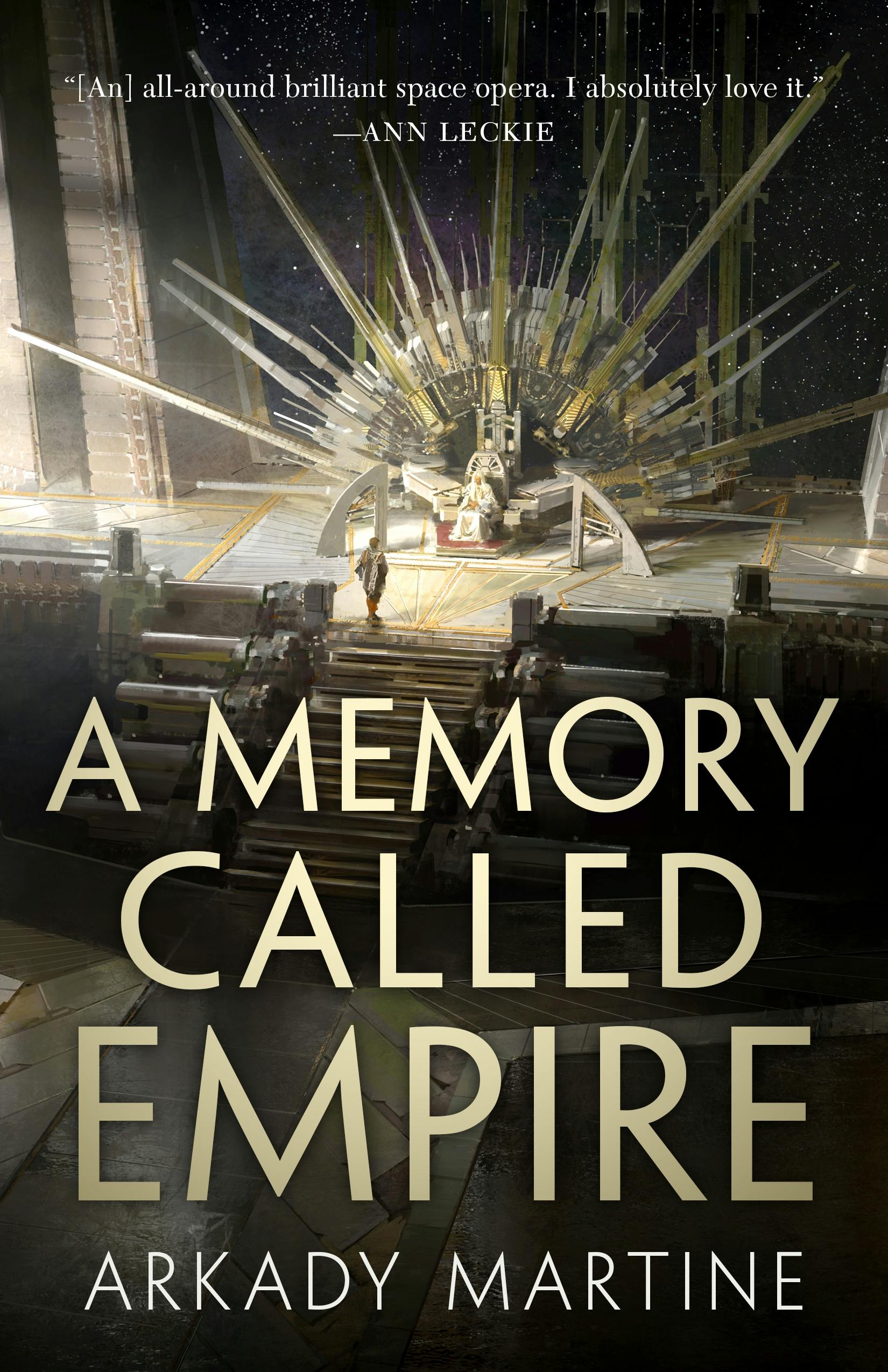A Memory Called Empire

Review
A Memory Called Empire, by , is the first book in the Teixcalaan series. It follows Mahit Dzmare, an ambassador from the space station Lsel, as she tries to save her home from being annexed by the Teixcalaanli empire.
A Memory Called Empire is a story of courtly intrigue in a science fiction empire. Mahit is summoned suddenly to Teixcalaan to replace her predecessor, Yskander Aghavn. She soon discovers he has been murdered, and that the empire is lurching toward a succession crisis. Mahit and her liaison, Three Seagrass, have to navigate the shifting allegiances and politics of the imperial court while defending Lsel Station and trying to uncover the murderer.
A primary theme of A Memory Called Empire is memory—how civilizations remember themselves and their history, and how that shapes their behavior. Lsel remembers through Imago lines, literally preserving the minds of those who came before, while the Teixcalaanli do it through a cultural narrative carried in poetry.
Another major theme is identity. It’s clearest in Mahit and her Imago—a machine that stores a previous mind-state and integrates it into your own. Is she still herself once another’s memories and personality are mixed into hers? The book asks how much of a person is their mind, how much is their body and biology, and how much is the culture they live in.
A subtler version of this theme plays out in the question of who belongs to the Empire, and who doesn’t. Who’s on Mahit’s side, and who’s not? The question “What is the definition of you?” comes up more than once, both in the context of Mahit and her Imago of Yskander, and in her relationships with others.
There’s a motif around star charts that ties into these themes. Star charts define what’s part of the Empire and what isn’t, and they also resemble maps of neurons in the brain. They show up in poems, above Mahit’s bed, and even in the names of characters.
The worldbuilding in this book was subtle. leaves a lot of mysteries—how the Sunlit work, who built the jumpgates, what exactly the aliens beyond Lsel Station are—that I hope get explored in the sequel, A Desolation Called Peace.
As a book about an ambassador and an orator, it’s the dialogue and the characters that carry A Memory Called Empire. The poetry feels a little forced at times, but each character is rich and has their own agenda. Figuring out who can be trusted—and when—is one of the joys of the story. The ending is fitting, full of poetry, symbolism, and dramatic gestures, which feels right for an Empire that sees itself as a living story.
This book reminded me of several others:
-
The Stationers, with their Imago mind-backup devices, are like the Chelgrians and their Soulkeepers in ’s Look to Windward. Mahit, a diplomat with a second personality in her head, reminded me of Major Quilan and the personality of Admiral Huyler he carries. The ever-present cloudhooks are like Culture terminals.
-
An empire with aptitude tests for imperial office—similar to Imperial China—reminds me of ’s The Tainted Cup.
-
The variety of minds—single minds, second personalities, group minds like the Sunlit and the shard pilots—felt like ’s Blindsight.
-
The poem posted on the network that spreads like wildfire reminded me of the way Peter and Valentine Wiggin influenced public discourse as Locke and Demosthenes in ’s Ender’s Game.
-
The snippets of in-universe texts at the start of each chapter are like ’s Stand on Zanzibar.
-
The way Mahit’s thoughts interrupt the narration reminded me of Harrier Du Bois in Disco Elysium. The part where Mahit is waking up during and after surgery, her mind scrambled and trying to stabilize, echoed Harry waking to dialogue from his Ancient Reptilian Brain and Limbic System.
-
The way I noticed the writing style made me think of ’s The Book of the New Sun, with its slightly archaic prose and intentionally unclear descriptions.
A Memory Called Empire hooked me with its characters and world, and I can’t wait to see where the author takes them in A Desolation Called Peace.